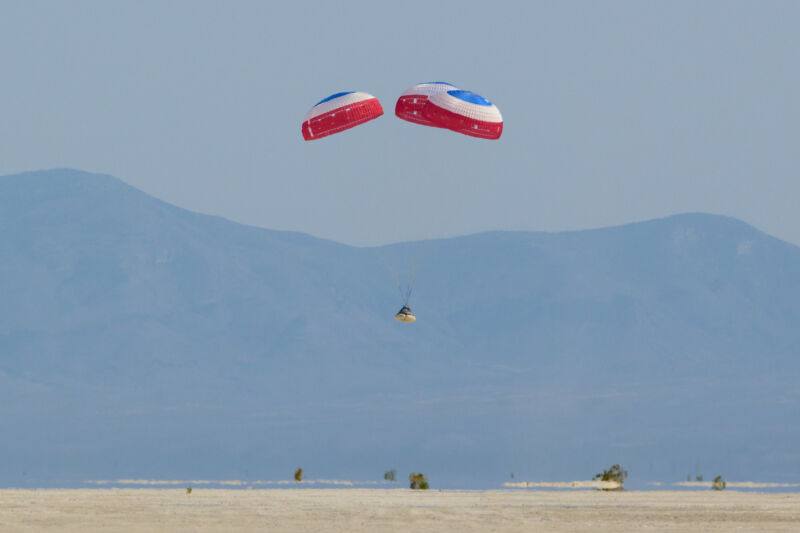Steve Stich is a buttoned-down NASA engineer who has worked at the space agency for decades, dating back to the space shuttle's heyday in the 1980s. But on Wednesday night, as he contemplated the success of Boeing's Starliner spacecraft after its six-day mission to the International Space Station, he said he had the chills.
"I probably can’t express in words what it meant for me and the team to see the whole mission go well," Stich said during a news conference at Johnson Space Center in Houston. "That’s really what this commercial crew program has been all about. I’m getting goosebumps."
Stich has held a leadership position in NASA's commercial crew program to fly astronauts to the International Space Station for the last seven years. This was a bold bet by NASA, trusting private companies to build and fly new spacecraft with limited NASA oversight. Not everyone supported the initiative, and it has faced some technical challenges. But now NASA is close to its final aim, having two independent means of accessing low Earth orbit.
SpaceX's Crew Dragon has already flown five missions to the space station, and Boeing's Starliner spacecraft is on the cusp of joining it. Proving Starliner's readiness was the purpose of Boeing's six-day flight test completed on Wednesday evening, which ended when the spacecraft safely landed in the White Sands Missile Range in New Mexico.
While being cautious and saying that NASA and Boeing need to review more data from the flight, Stich offered this pretty definitive conclusion about the vehicle and its test flight: "The Starliner is a great vehicle for crew transportation."
Some issues
It was not a flawless flight, of course, because this was a shakedown cruise meant to find and fix any lingering problems. Two of the 20 main thrusters on the spacecraft's service module, used for orbital maneuvering, failed shortly after Starliner separated from its Atlas V rocket. They were not recovered during the flight. Two smaller reaction control system thrusters also failed during the approach to the space station, but they were recovered.
Although there were a few delays, Starliner ultimately made a smooth rendezvous and docking with the space station, and its cooling system kept the vehicle's cabin interior at a comfortable temperature. During the reentry sequence on Wednesday, one of the 12 reaction control engines on the crew module appeared to shut down early, and there was also a brief drop in the navigation system's communications with the GPS network.
However, Stich said, Starliner met "all of the objectives" for this test flight, and this likely clears NASA and Boeing to press ahead with a crew flight test. Engineers have a lot of data to review from the flight and may need to make some modifications to the Starliner spacecraft that will be used for the crew test. However, neither Stich nor Boeing's Mark Nappi said they expected to make a major redesign to any systems on the vehicle.
Asked about the performance of Starliner compared to Crew Dragon, which made a successful demonstration flight more than three years ago, Stich said that NASA and the private companies learned a lot from both of these test missions. He also noted that Crew Dragon had its own issues, necessitating redesigns to the vehicle's parachute and propulsion systems.
This was Boeing's second attempt at a test flight after the first Starliner mission failed in December 2019 due to software issues. Since then, the company has spent about $600 million to revamp Starliner's flight software and address other problems, including sticky propulsion valves. To a large extent, those measures appeared to work over the last week, putting Boeing on a good path to fly humans into space soon.
As for when that mission will come, Stich said NASA and Boeing are working toward having the hardware ready by the end of this year. However, he acknowledged, "Certainly it could move into the first quarter of next year." Expect NASA to name a crew for Starliner's first flight in the next few months and for the spacecraft to take flight again during the first half of next year, barring major issues with the flight's data.



3175x175(CURRENT).thumb.jpg.b05acc060982b36f5891ba728e6d953c.jpg)

Recommended Comments
There are no comments to display.
Join the conversation
You can post now and register later. If you have an account, sign in now to post with your account.
Note: Your post will require moderator approval before it will be visible.